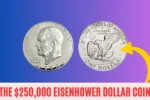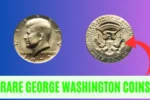Rare 20p Coin Worth 250 Times Its Face Value: A Coin Collector’s Dream
Everyday change often seems ordinary, but for coin collectors, it can conceal untold treasures. One such treasure is the undated 20p coin from 2008, a rare find that has earned legendary status in the world of numismatics. Struck without a date by mistake, this coin has become an incredibly valuable collectible, worth up to £50—250 times its face value.
The excitement surrounding this coin is not just due to its value, but the thrill of discovery. Still in circulation, it could be hiding in your wallet, purse, or coin jar. In this article, we’ll dive into the unique characteristics of the undated 20p coin, explore how the minting error happened, and explain why collectors are eager to find it.
Key Features of the Undated 20p Coin
| Feature | Details |
|---|---|
| Coin Name | Undated 20p Mule Coin |
| Year | 2008 |
| Error | Missing date on both sides of the coin |
| Cause of Error | Mismatched dies used during minting |
| Rarity | Extremely rare; only a few were released |
| Estimated Value | Around £50 (250 times face value) |
| Historical Significance | First UK coin in over 300 years issued without a date |
Why Is the Undated 20p Coin So Special?
A Historic Minting Error
The undated 20p coin is remarkable because of a rare minting mistake made by the Royal Mint in 2008. This year marked the introduction of a new design for British coins, featuring the Royal Shield of Arms across multiple denominations. During this redesign, a batch of 20p coins was accidentally struck without a date—a mistake that hadn’t been made in UK currency for more than 300 years.
This error occurred when two dies—one for the reverse (tails) side and one for the obverse (heads) side—were paired incorrectly, both lacking the date. The result? A batch of coins that broke with tradition and became highly sought-after by collectors.
Why Collectors Value the Undated 20p Coin
The rarity of the undated 20p coin plays a major role in its high value. Only a small number were produced before the error was discovered, making them extremely rare. In addition, the lack of a date—an essential feature of legal tender—adds to its mystique. For collectors, owning such a unique piece represents more than just a coin—it’s a connection to a moment in British numismatic history.
The Minting Mistake Behind the Coin
The error that created the undated 20p coin occurred during the minting of the 2008 coin series, which was part of a major redesign of British coins. The new design introduced the Royal Shield of Arms, which spanned across different denominations. Traditionally, the date was placed on the reverse side of the 20p coin, but with the redesign, the date was moved to the obverse side. Unfortunately, two dies were mistakenly paired that both lacked the date, resulting in the error.
How to Identify the Undated 20p Coin
If you think you’ve come across an undated 20p coin, here’s how to confirm it:
- Look for the Date: Carefully examine both sides of the coin. A standard 20p will feature the date either on the obverse or reverse side. If there’s no date at all, you may have found the rare undated 20p.
- Check the Coin’s Condition: Ensure that the missing date is not simply due to wear. A worn coin may have faded details, but an undated coin will be missing the date entirely due to the minting error.
- Consult an Expert: If you believe you’ve found an undated 20p, have it appraised by a professional numismatist or trusted coin dealer to confirm its authenticity.
Why You Should Check Your Change
A Hidden Treasure
One of the most exciting things about the undated 20p coin is that it’s still in circulation. Anyone could stumble upon it in their change, making it accessible to everyone—whether you’re an experienced collector or a casual enthusiast.
Worth Far More Than Its Face Value
With an estimated value of £50, the undated 20p coin is worth 250 times its original value. For collectors, it’s more than just a financial prize; it’s a rare piece of history, coveted for its unique error.
Broader Appeal of Coin Collecting
The undated 20p coin is just one example of how everyday coins can hold extraordinary value. For collectors, these rare finds are not only about financial gain but also about connecting with history and the artistry of coin design.
Other notable UK coin errors include:
- 2009 Kew Gardens 50p Coin: Known for its low mintage, it’s one of the most valuable modern coins.
- 1983 New Pence Error: A batch of 2p coins mistakenly struck with “New Pence” instead of “Two Pence.”
- 2016 £1 Coin Errors: Some coins were released with misaligned designs or missing features, making them rare and valuable.
What to Do If You Find an Undated 20p Coin
If you’re lucky enough to find an undated 20p, follow these steps:
- Confirm Its Authenticity: Have a professional numismatist or coin dealer verify the coin’s authenticity.
- Preserve the Coin: Store it in a protective case to prevent damage.
- Decide What to Do Next: While the coin’s value is estimated at £50 now, its rarity may increase over time. You may choose to keep it as an investment or sell it to a collector.
Final Thoughts: The Excitement for Coin Collectors
The undated 20p coin is a perfect example of how small details can lead to extraordinary discoveries. For coin collectors, it’s not just about financial value—it’s the excitement of finding a piece of history in the most unexpected places.
Whether you’re an experienced numismatist or just curious about the coins in your spare change, this rare coin is a reminder of the thrill of collecting. So next time you reach for your wallet, take a moment to look at those coins—you might be holding a treasure worth far more than you think.



